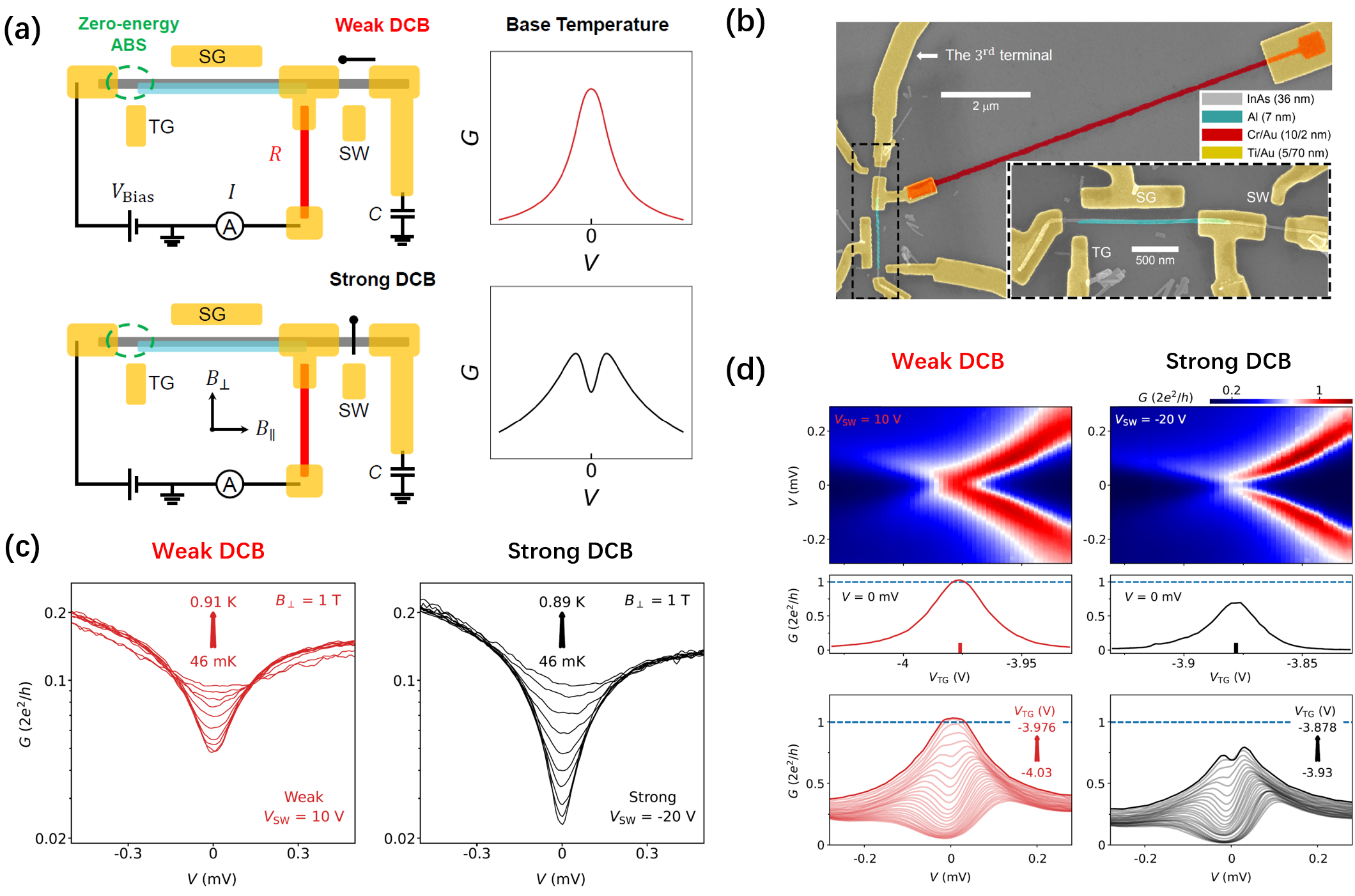Dynamical Coulomb blockade (DCB) is a well-studied interaction effect: When a tunneling barrier is connected in series to a large resistor, the transmission probability through the barrier is suppressed due to interactions between the tunneling electrons and the bosonic plasma modes in the resistor. In quantum transport, the DCB effect is revealed as a conductance suppression near zero energy (bias) at low temperatures. In recent years, the team led by Prof. Hao Zhang, in collaboration with Prof. Dong E. Liu, has realized the DCB effect in hybrid superconductor-semiconductor nanowire devices, aiming to distinguish Majorana zero modes from Andreev bound states (ABS), see e.g. PRL 128, 076803 (2022), PRL 128, 076802 (2022), and PRB 106, 205421 (2022). Prof. Dong E. Liu has predicted that DCB can suppress trivial zero-bias peaks (ZBPs) but not Majorana-induced ZBPs (PRL 111, 207003 (2013)). In previous experiments, the strength of DCB is non-adjustable. Here, the team has realized a three-terminal circuit design so that the DCB strength can be gate-tuned in situ, providing a powerful experimental knob to “diagnose” various ZBPs.

(a) Circuit schematic. The switch (SW) gate can open/pinch off the third terminal of the nanowire, reaching the weak/strong DCB regime, revealing a ZBP/split-peak, correspondingly. (b) False-colored SEM of the device. (c) Conductance suppression in the normal state (B = 1 T) in weak (left) and strong (right) DCB regimes. (d) Fine-tuned ZBP near 2e2/h in the weak (left) and strong (right) DCB regimes.
Panel (a) in the figure above shows the schematic of the circuit design. Part of the semiconductor nanowire is used as a third terminal which is kept floated. When the switch gate (SW) opens the nanowire segment, the DCB effect induced by the resistor (R) is shunted, as the DCB strength scales with the environmental impedance for the frequency range from 0 to tens of GHz. A ZBP can be revealed for a zero-energy Andreev bound state (ABS) at the fridge base temperature. When the SW pinches off the nanowire segment, the DCB effect is strong and the ZBP gets split. The device SEM is shown in panel (b). In Panel (c), the device is in its normal state so that DCB suppression can be confirmed in the weak and strong DCB regimes: The suppression near zero bias is stronger in the strong DCB regime than that in the weak case. In the superconducting regime (panel (d)), an ABS is created and fine-tuned to 2e2/h. As the DCB strength increases, the ZBP gets split and the zero-bias conductance is suppressed, agreeing with the schematic in panel (a).
The work, entitled “In situ tuning of dynamical Coulomb blockade on Andreev bound states in hybrid nanowire devices”, is published in Physical Review B. The first authors are Dr. Shan Zhang from Physics Department, Dr. Zhichuan Wang form Institute of Physics and Prof. Dong Pan from Institute of Semiconductors. Corresponding authors are Dr. Runan Shang, Prof. Jianhua Zhao and Prof. Hao Zhang. The work is supported by the National Natural Science Foundation of China, Ministry of Science and Technology of China, Tsinghua University Initiative Scientific Research Program, Beijing Municipal Science and Technology Commission.
Paper Link:https://link.aps.org/doi/10.1103/PhysRevB.108.235416